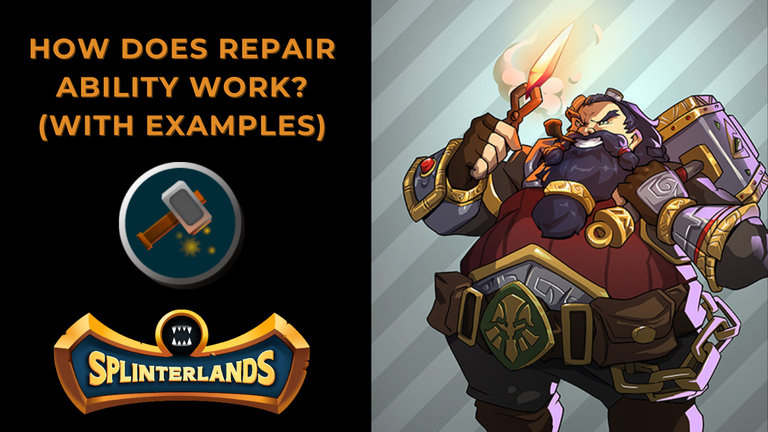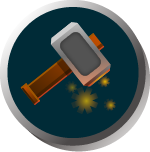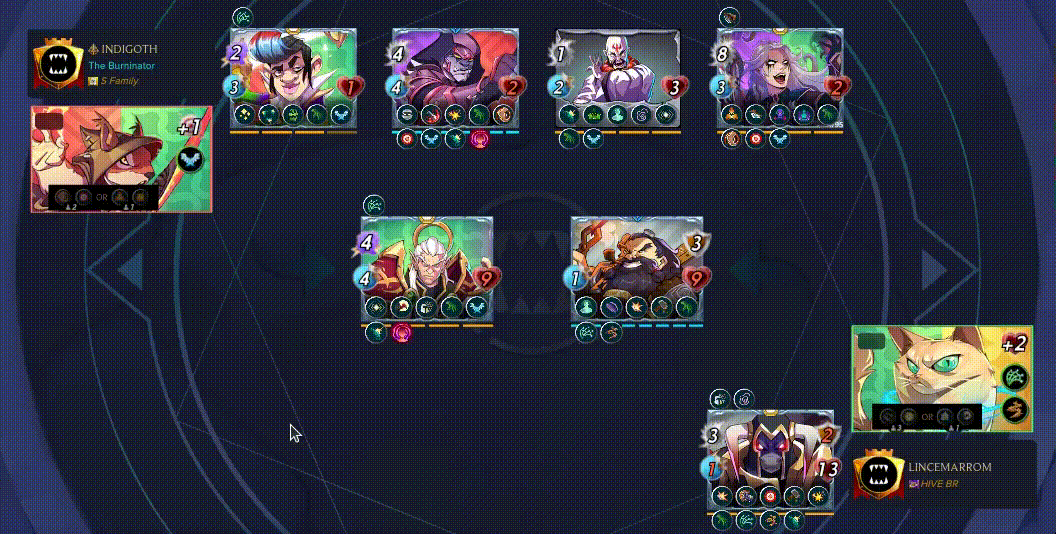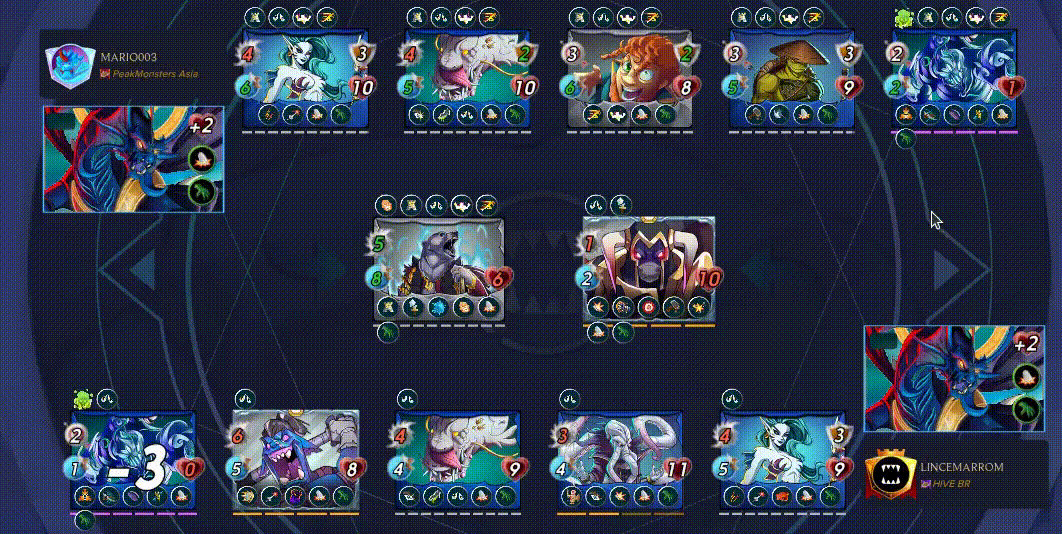
Thumbnail made by me, using Canva
All the images from the thumbnail are by @splinterlands
Versão em português logo abaixo
English
Repair is one of the most interesting abilities in Splinterlands. It's a defensive type, where the card that holds it will restore two points of armor to the ally that suffers the most damage to this attribute. Basically, this is the description you'll find when you encounter it in-game.

Repair ability
Although the description is correct, some people may end up misinterpreting it, which is why I'm going to detail it so there's no doubt about it.
Firstly, when two monsters with the same amount of armor take damage from it, the one that is further ahead on the battlefield will receive the repair. This is regardless of the amount of life they both have, or how much damage they have taken.
This last detail is very important and is the biggest cause for doubt about this ability. It doesn't matter how much damage was received, but rather how much armor was reduced. So, for example, if a monster has 3 points of armor and another 1, but the one with 1 has suffered an attack of 5 damage, and the one with 3 has suffered an attack of 3 damage, the skill will be applied to the one with the 3 points, because it has suffered more damage to its armor.
The game doesn't calculate how much damage was taken to the armor, but rather how much armor was reduced.

Let's look at some examples in practice that confirm what has been described above.
Example 1:
This is the perfect example showing that whoever loses the most armor will be restored first. See that the card in front has 1 point of armor, while the one behind has only 3. Both suffer attacks, but the one in front suffers 5 damage, which is contained by the 1 point of armor, while the one behind suffers only 2 points of damage. Even so, the one behind, which has Repair, ends up self-restoring its armor.

Click here to watch the full battle!

Example 2:
Now for a slightly more complex example.
You see that Grimbardun (in front) has 3 points of armor, while Mantaroth (behind), has 2 points (he has 4 points, but because of the opponent's card ability, he only has 2 left).
After suffering attacks, both are without armor, but have Repair to restore it. The first to act is Mantaroth, who restores 2 of Grimbardun's 3 armor points. And now Grimbardun restores his 1 remaining armor point, right?
Wrong.
Because the Mantaroth has 2 armor points left to restore, while the Grimbardun only has 1. So the Grimbardun repairs his ally.

Click here to watch the full battle!

Example 3:
This example shows why the amount of life doesn't matter.
On the opponent's side, the card at the bottom of the back row loses the most life compared to the one in front. Both have the same amount of armor, so the card with Repair restores the armor of the one in front.

Click here to watch the full battle!

I hope that these examples have made it clear how this incredible ability works. If you have any questions, leave a comment below and I'll get back to you as soon as possible.
If you've read this post so far, thank you very much!
See you later!
Translated by me with the help of DeepL
All the images are from @Splinterlands
Divider By: @freeztag
Are you not playing Splinterlands yet? Click HERE and play with me!

Português
Repair é uma das habilidades mais interessantes em Splinterlands. É do tipo defensiva, onde a carta que a detém, irá restaurar dois pontos de armadura do aliado que sofrer mais dano sobre este atributo. Basicamente, esta é a descrição que você irá encontrar ao encontrá-la dentro do jogo.

Habilidade Repair
Apesar da descrição estar correta, algumas pessoas podem acabar interpretando de forma errônea, e por isso irei detalhar para que não reste nenhuma dúvida a respeito.
Primeiramente, quando dois monstros com a mesma quantidade de armadura sofrerem dano sobre ela, aquele que estiver mais a frente no campo de batalha, rebeberá a reparação. Isso independe da quantidade de vida que ambos tiverem, além do dano que receberam sobre ela.
Esse último detalhe é muito importante e é o maior causador de dúvidas a respeito dessa habilidade. Não importa o quanto de dano foi recebido, e sim o quanto de armadura foi reduzido. Então, por exemplo, se um monstro tem 3 pontos de armadura e outro 1, porém o que possui 1 sofreu um ataque de 5 de dano, e o que possui 3 sofreu um ataque de 3 de dano, a habilidade será aplicada sobre aquele que possui os 3 pontos, pois sofreu mais dano sobre a armadura.
O jogo não computa o quanto de dano foi recebido sobre a armadura, e sim o quanto de armadura foi reduzido.

Vamos analisar alguns exemplos na prática, que confirmam o que foi descrito acima.
Exemplo 1:
Este é o exemplo perfeito que mostra que quem perde mais armadura, será restaurado primeiro. Vejam que a carta a frente possui 1 ponto de armadura, enquanto a de trás possui apenas 3. Ambas sofrem ataques, porém a da frente sofre 5 de dano, que é contido pelo 1 ponto de armadura, quanto a de trás sofre apenas 2 pontos de dano. Mesmo assim, a de trás, que possui Repair, acaba auto restaurando sua armadura.

Clique aqui para ver a batalha completa!

Exemplo 2:
Agora um exemplo um pouco mais complexo.
Vejam que o Grimbardun(na frente) possui 3 pontos de armadura, enquanto o Mantaroth(atrás), está com 2 pontos(ele possui 4 pontos, mas por conta da habilidade da carta adversária, está com 2 restantes apenas).
Após sofrerem ataques, ambos estão sem armadura, mas possuem Repair para restaurá-la. O primeiro a agir, é o Mantaroth, que restaura 2 dos 3 pontos de armadura do Grimbardun. E agora o Grimbardun restaura seu 1 ponto de armadura restante, certo?
Errado.
Pois restam 2 pontos de armadura a serem restaurados no Mantaroth, enquanto restam 1 apenas no Grimbardun. Logo, o Grimbardun faz a reparação de seu aliado.

Clique aqui para ver a batalha completa!

Exemplo 3:
Este exemplo mostra porque a quantidade de vida não importa.
No lado adversário, a carta que está na última posição da linha de trás, perde a maior quantidade de vida, em comparação com aquela que está a frente. Ambas estão com a mesma quantidade de armadura, e então a carta com Repair restaura a armadura do que está na frente.

Clique aqui para ver a batalha completa!

Espero que com esses exemplos, tenha ficado claro sobre o funcionamento dessa incrível habilidade. Se restou alguma dúvida, deixe um comentário abaixo que eu responderei assim que possível.
Se você leu este post até aqui, meu muito obrigado!
Até mais!
Todas as imagens são do: @Splinterlands
Divisor do: @freeztag
Não joga Splinterlands ainda? Clique AQUI e venha jogar comigo!

Posted Using INLEO

